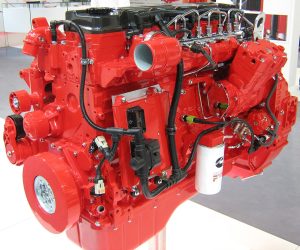
Overview of the Cummins B-Series Engines
The B-series was introduced in the 1980s and quickly gained a reputation for reliability. These inline engines have been used in everything from light trucks to construction equipment, buses, marine vessels, and generator sets. The Cummins 6BTA5.9 and 4B3.9are two prominent members of this lineup, each tailored for different performance needs.
Structural Differences
1. Number of Cylinders
4B3.9: 4 cylinders
6BTA5.9: 6 cylinders
This is the most obvious difference. The 6BTA5.9, with two additional cylinders, delivers greater displacement and power, making it suitable for more demanding applications.
2. Displacement
4B3.9: 3.9 liters
6BTA5.9: 5.9 liters
The higher displacement of the 6BTA5.9 means more air and fuel can be burned, generating more torque and horsepower.
3. Cummins Turbocharging and Aftercooling
4B3.9: Available in both naturally aspirated and turbocharged versions; no aftercooler
6BTA5.9: Turbocharged with an aftercooler (denoted by “A”)
The aftercooler in the 6BTA5.9 increases the engine’s efficiency by cooling the compressed air before it enters the combustion chamber. This allows more oxygen per cycle, improving combustion and power output.
4. Power Output
4B3.9: Typically 60–120 hp
6BTA5.9: Typically 150–250 hp or higher
Thanks to its additional cylinders and turbocharged, aftercooled design, the 6BTA5.9 can deliver significantly more power.
5. Engine Block and Dimensions
While both engines share the same basic design philosophy, the 6BTA5.9 is physically larger and heavier. This influences installation requirements and cooling system specifications.
6. Fuel System
Both engines commonly use a mechanical inline fuel injection pump, but the 6BTA5.9 may also be found with electronic controls in newer models.
Application Scenarios
Cummins 4B3.9: Compact Power and Efficiency
The 4B3.9’s smaller size and lower weight make it ideal for:
Light construction equipment (e.g., skid-steer loaders, small excavators)
Agricultural machinery
Small generators (20–60 kW)
Industrial pumps
Marine auxiliary engines
It’s well-suited for applications where fuel efficiency, ease of maintenance, and compact size are more critical than high output.
Cummins 6BTA5.9: High Performance and Versatility
The 6BTA5.9 is a workhorse in:
Medium-duty trucks and buses
Larger construction equipment (e.g., loaders, graders)
Marine propulsion
Generators (50–125 kW)
Military and emergency vehicles
Its power and torque make it ideal for situations requiring high load-bearing capability, prolonged operation, and adaptability across terrains and conditions.
Reliability and Maintenance
Both engines are built with durability in mind. However:
The 4B3.9 benefits from a simpler design with fewer components, resulting in slightly lower maintenance costs and easier servicing.
The 6BTA5.9, while more complex, is still known for its long service intervals and ruggedness—particularly when maintained according to Cummins guidelines.
Parts availability for both engines is excellent globally, thanks to their widespread adoption.
Conclusion
Choosing between the Cummins 4B3.9 and 6BTA5.9 depends largely on your application requirements. If you need a compact, fuel-efficient engine for lighter-duty tasks, the 4B3.9 is a smart choice. On the other hand, if you require higher power, torque, and the ability to operate in more demanding environments, the 6BTA5.9 stands out as the better option.
Understanding the structural differences between these engines helps ensure optimal performance, longer service life, and reduced operational costs in the long run.